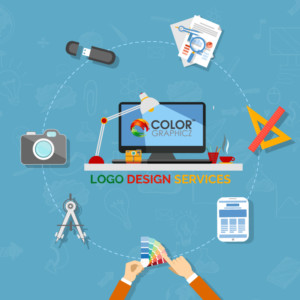Experienced designers here at Colorgraphicz, who create logos for living have gotten pretty good at the process. Although we hate to put too structured an outline for such a creative endeavor, hey, as they say, deadlines require scaffolding and best practices make any venture more productive, right? We believe so.
Our designers follow the outlined highlighted below to make things run more smoothly and to make sure the customer is involved and the end product really hits the mark.
Ask Questions: We take the opportunity to pick your brain about the logo. Some of the specific questions and follow-up question we ask include:
Who is your target audience?
What are the demographics of those looking for you online? Age? Sex? Occupation? Hobbies? What are they likely to do in their spare time?
Who are you trying to reach? How do you want to reach them? When are they likely to see you? At work? At home?
What is the personality of business? What is your culture? Casual? Professional?
What colors are you partial to? Do you like the colors your company is currently using?
Can you show me some logos you like?
What are your company’s taglines?
Bad connotations to avoid in this industry?
Any competitors who are really doing it right? What do you like about their brand? What do you dislike?
Outside your industry, anyone you’d like to duplicate? Their look and feel? Their approach?
Remember, all this is so that we can take detailed notes, especially if we are shown examples of things you like and don’t like. We get a great feel for the type of logo you are partial to. An emblem, letter mark, symbol or some combination of these.
Not only does it help understand your personal preferences (critical to actually getting the logo approved) but we’ll know more about the industry and target market so we can possible come up with some creative concepts that will capture their audience that they have not yet considered.
Pencil to Paper: nothing is quite like sketching some ideas on some good old fashioned paper. Different concepts can be quickly outlined and just as quickly discarded. Often these sketches are doodled during meetings, watching tv or just lounging around. The best ideas seem to happen while the mind is otherwise distracted and the pen is allowed to wander around unencumbered by too much thought or focus. Some artists like doing this on an iPad or directly on their computer, but nothing seems to generate more fresh approaches than a few dozen doodles.
“Sketching isn’t time-consuming and is a really good way to put ideas in your head right on paper…sketching helps to evolve your imagination: once you understand it, you will always start from just white paper.”
Dainis Graveris
While sketching, we will do some industry research. Based on some of the competitors or examples that the decision maker gave- we can get on the internet and see what’s out there. We’ll look at competitors, Google images and some logos within the industry. Additionally, some basic word association brings in associated ideas.

Recent Comments